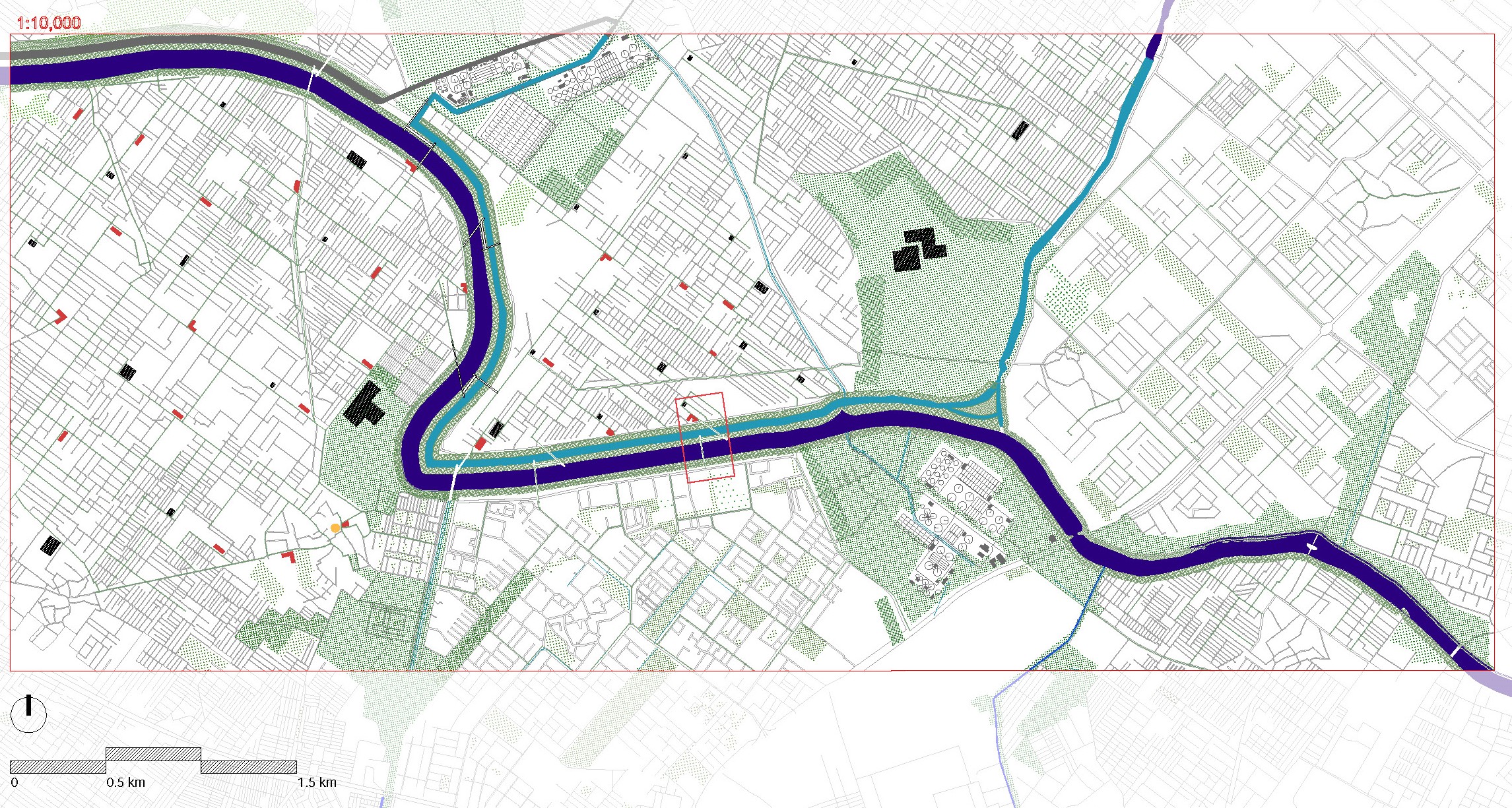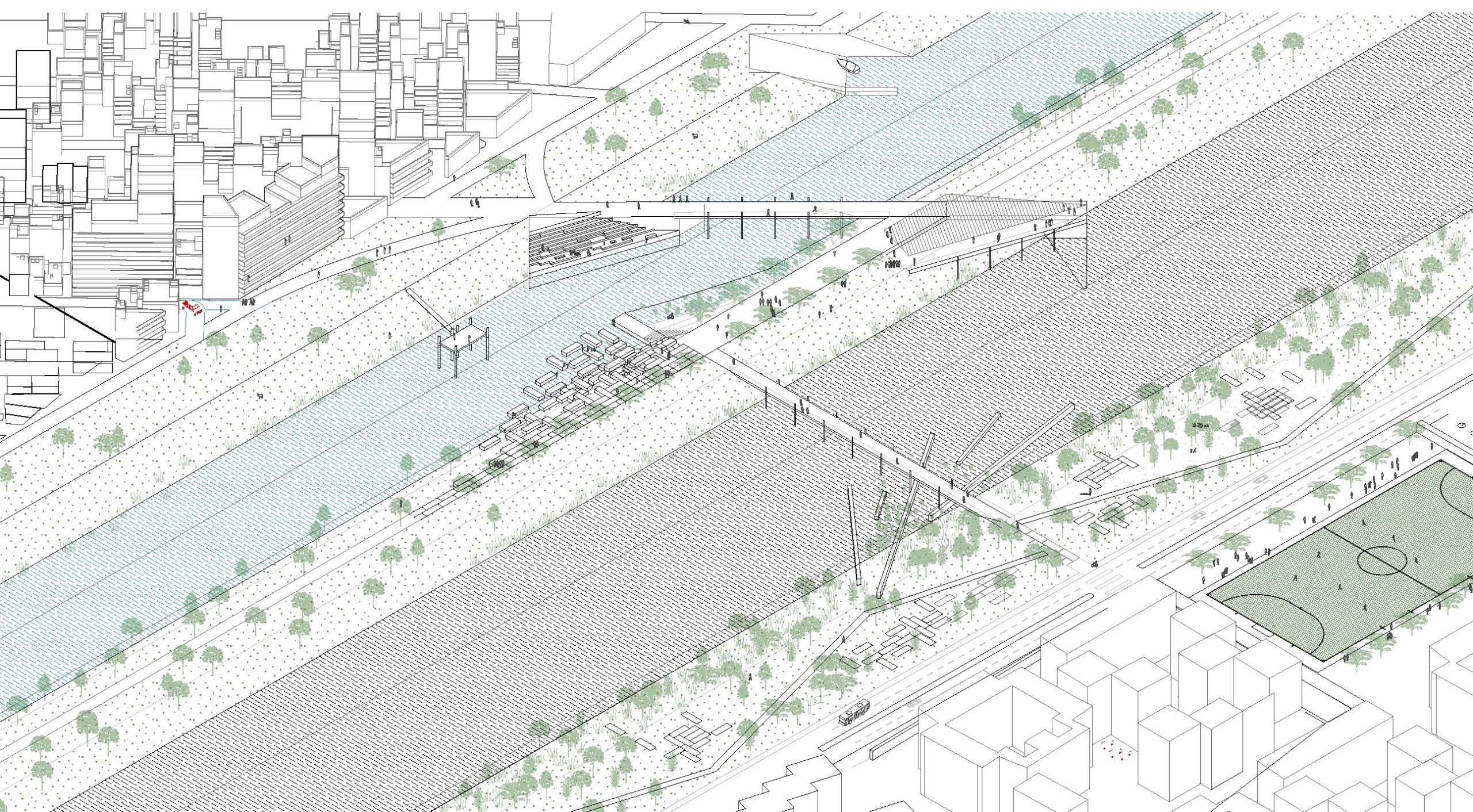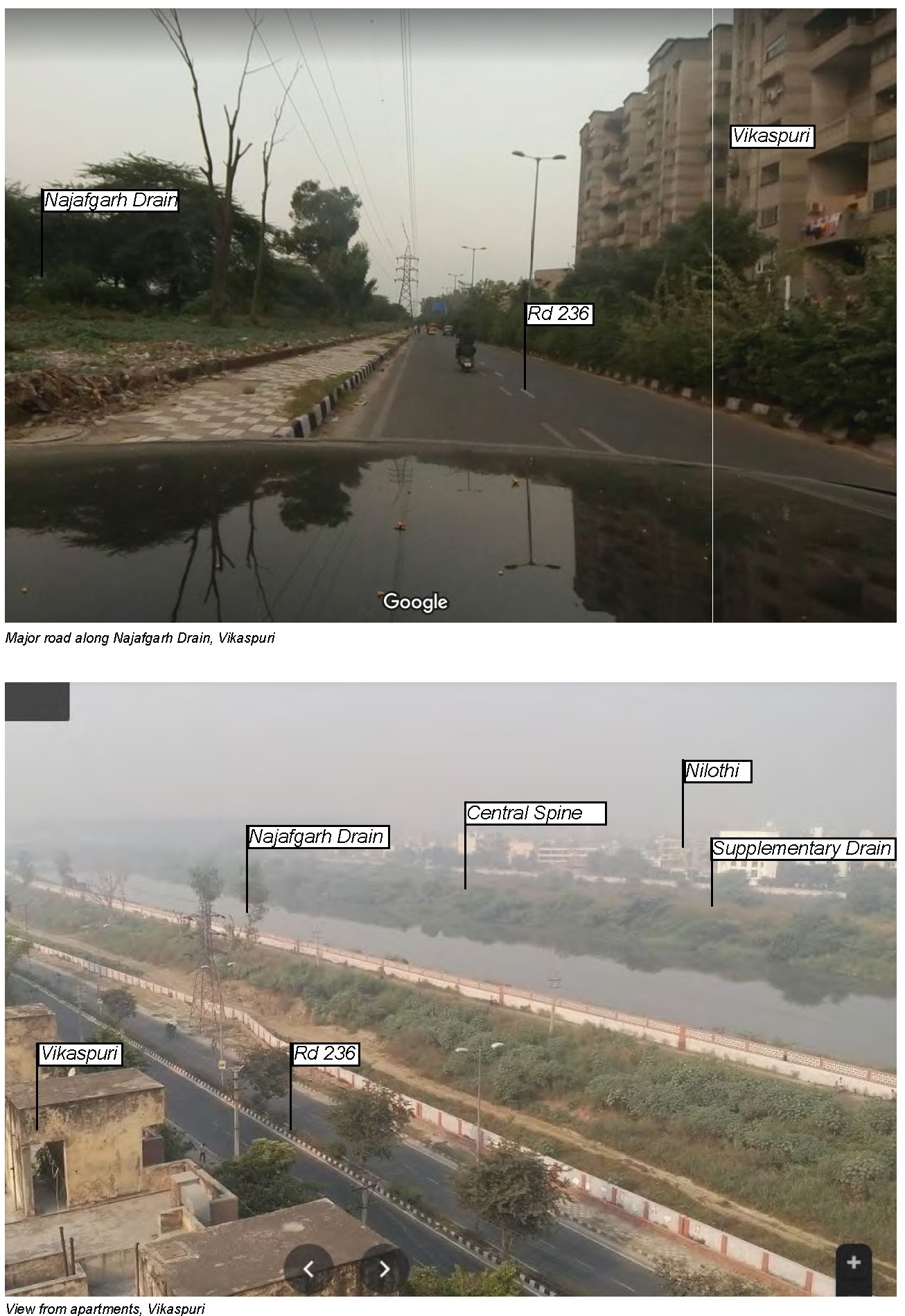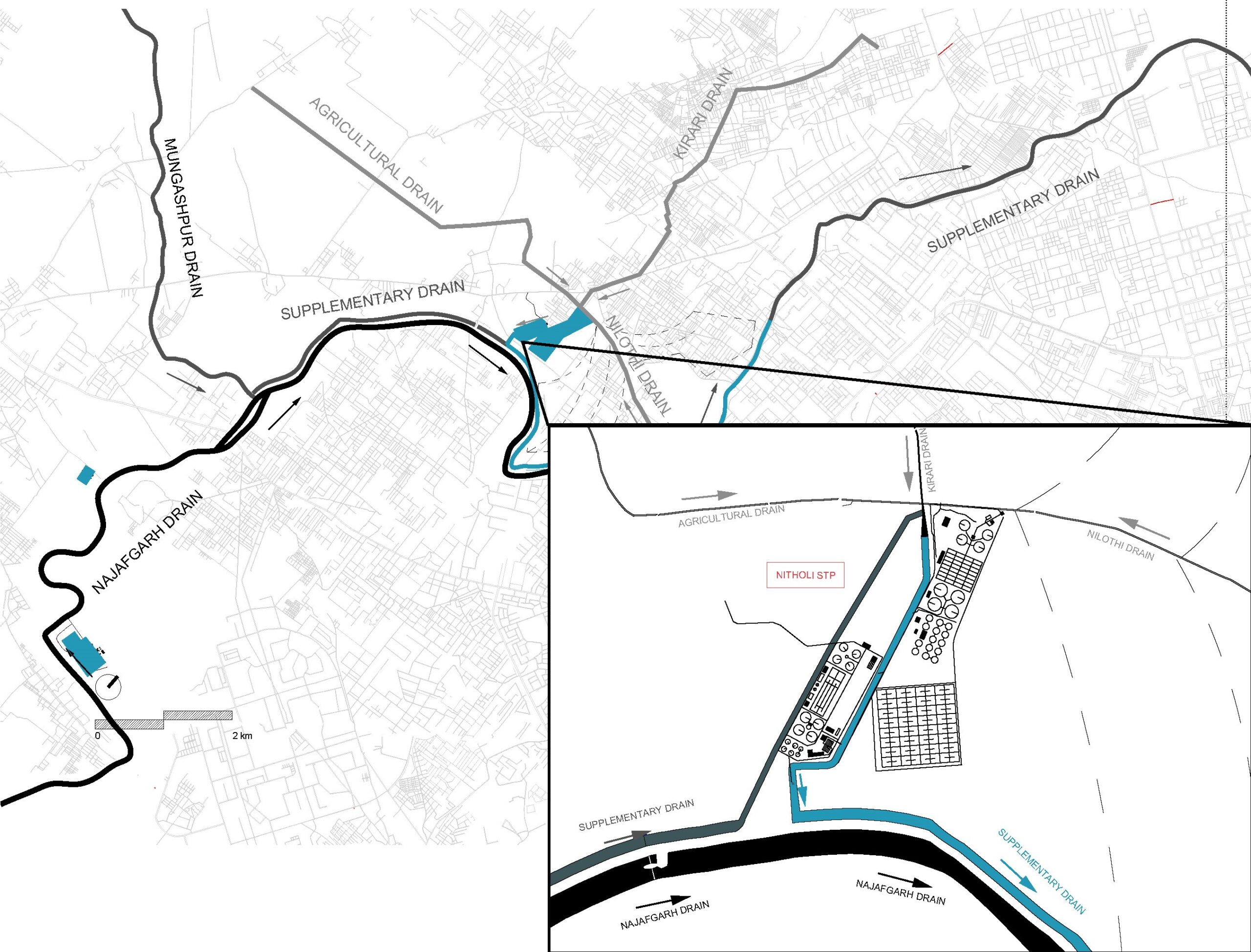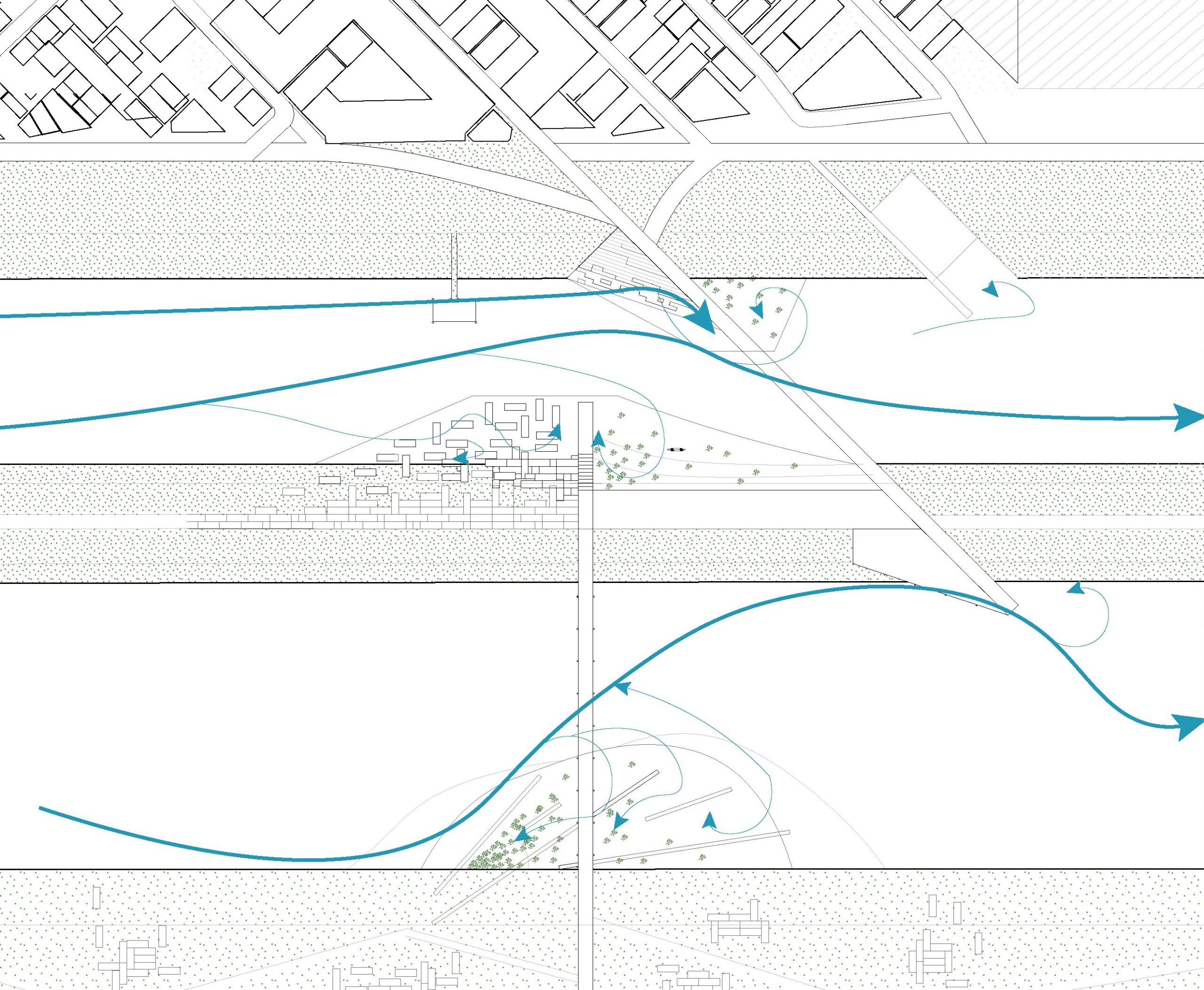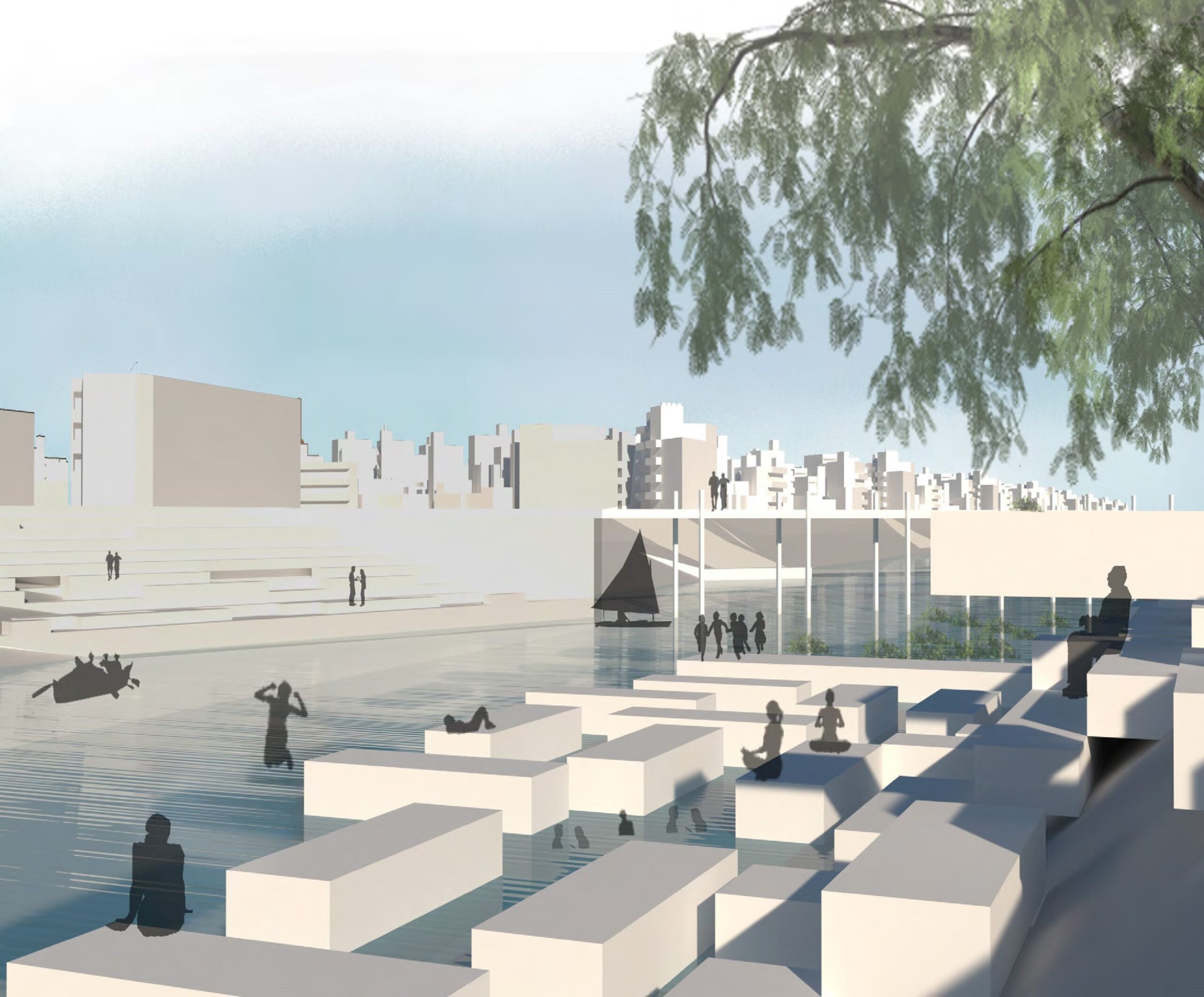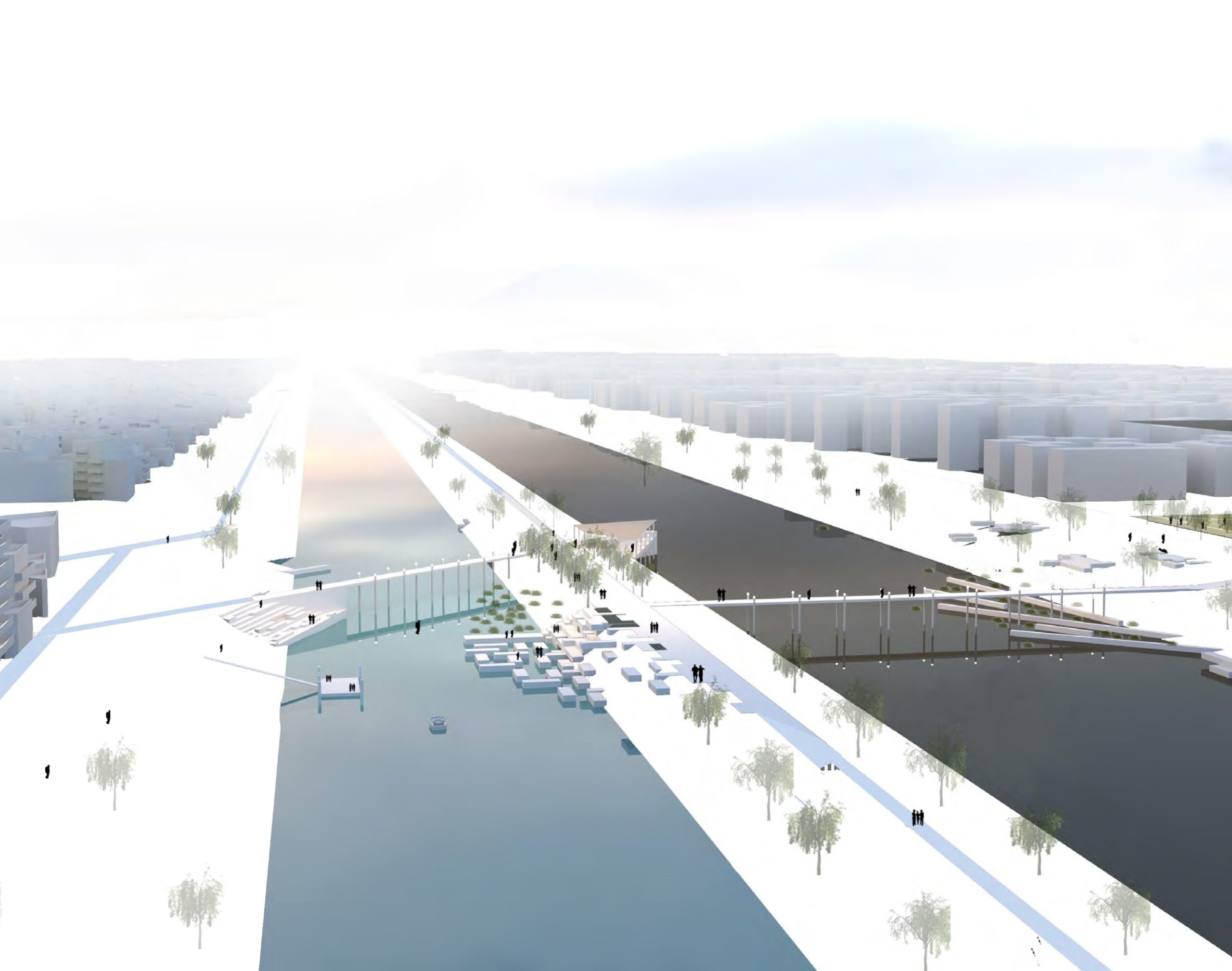To return to a Delhi which has an intimate relationship with its water systems, where do we start? Lessons of urban theory tell us that large, state controlled, centralized projects may not be appropriate in this case. The channelization of the Najafgarh, in fact, produced some of these problems in the first place. The restoration of Delhi’s waters must rely on social and decentralized infrastructures to maintain itself. These infrastructures can be started with a change in urban imaginaries. Interventions which provide an example and vision of clean water systems can plant seeds of urban imaginaries with clean water. The project proposes to isolate the Supplementary and Mungashpur drains, diverting them through the unused capacity of the Nilothi STP, producing a landscape of clean water running parallel to the polluted Najafgarh while introducing public spaces and amenities along these new arteries.
